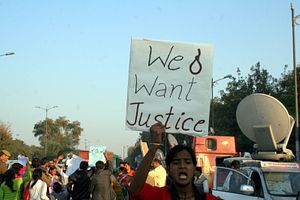Consent is an important theme governing today’s conversation in India regarding women’s safety in public spaces. As violence against women becomes more prominent in media reportage, the resultant dialogue and political demands go beyond just calling for harsher punishment for perpetrators and better grievance redressal overall. Allowing consent to seep into and become an important part of legislative and awareness campaigns is a key goal of welfare groups and activists. Two incidents in February 2017 can be read with hope as signs that such an attitude might be germinating in India.
The Bombay High Court, in a recent verdict regarding a plea for bail, established that a woman’s consent was not defined merely by the absence of a “no” or even the presence of a “yes.” This is a hallmark precedent when you look at the justice system’s approach to date toward cases of violence against women. In an overwhelming number of cases of sexual harassment, assault, or rape, the judicial process and the court of public opinion disproportionately place the onus upon female victims to prove that a crime has occurred and further that they had taken the necessary precautions to avoid it. This includes questioning not just the action(s) of the victim on the day(s) relevant to the case in hand, but also their clothing, behavior, habits, and proclivities.
The judicial process in practice in some sense creates a category of what a victim looks like and implicitly contrasts that same with a stereotype of a woman who was more likely to be sexually harassed. In doing so, it becomes the responsibility of the woman to police herself to fit a certain social ideal, both in public and in private – and women who play around with these boundaries end up having higher burdens of proof when they encounter violence and seek redress. The Bombay High Court, by broadening the scope of what consent means, has clarified that it cannot be sought when an individual is semi-conscious, unconscious, etc. Through this, it ends the notion that certain women’s choices are accompanied by the presumption that they are open to any form of sexual activity.
While this verdict becomes an important inlet that allows lawyers to seek better justice for victims of assault, another key policy change deserves mention for the critical awareness it seeks to spread. The Ministry of Health and Family Welfare launched a resource kit on adolescent health issues called the “Saathiya Resource Kit.” Breaking multiple social taboos, it addresses sensitive and sparsely discussed topics like attraction, same-sex attraction, stereotyping, and substance abuse. Currently distributed in both Hindi and English, it serves as the base resource material of peer educators and is accompanied by an e-counselor helpline.
Rather than vilifying attraction of all forms, it discusses that harboring feelings for other individuals — even those belonging to the same sex — is normal. It further explains that consent is important no matter what the nature of the relationship is and that it is vital to respect boundaries and the feelings of the other person – and to understand that a “no” means “no.” By catering these lessons towards adolescents, the Ministry, in partnership with the United Nations Population Fund, hopes to inculcate this outlook at a grass roots level. The manual also discusses stereotypes regarding masculinity and emotions and provides comprehensive lessons on safe sex and sexually transmitted diseases.
Both legally and on the ground through policy, India still has a long way to go towards gender sensitization and the establishment of proper channels to address gender-based violence. But moves like the above are important steps along the way, not just in terms of providing the requisite apparatus to deal with these issues, but also in terms of providing hope that there are still systems in place that recognize a need for change.
































